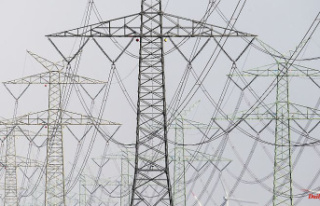Competition is the key to selling oil and gas royalties for the greatest potential price.
You want to find a buyer that is prepared to pay the most for your producing oil and gas mineral rights. This guide will explain all you need to know if you want to maximize value while selling oil and gas royalties.
Sell Oil and Gas Royalties for the Most Money
When you begin looking into how to sell oil and gas royalties, you will immediately realize that there are thousands of oil and gas royalty firms willing to buy your oil royalties. How do you decide which firm to hire? How do you tell whether you’re getting a decent deal? What are the reasons to sell mineral rights?
Your principal purpose as a mineral owner is to sell oil and gas royalties for the greatest feasible price. When you sell oil royalties, you want to make as much money as possible.
The key to maximising value when selling royalties is to bring your land in front of a big audience of mineral rights purchasers. The rationale for this is that selling oil royalties interests to a big number of purchasers allows these buyers to compete with one another. When bidders compete with one another, the price rises, ensuring that you receive the highest market value when selling oil royalty rights.
Many mineral owners sell their oil royalty holdings on their own. When selling royalties, they will gather a few offers, choose the highest, bargain a little, and believe they got a good deal. This method virtually never yields fair market value.
If you are selling oil royalty interest, you may be unaware that there is almost always a greater price available.
Consider the following example. You may assemble a few proposals, haggle for $4,000/acre, and then presume you got a good deal because it was greater than your previous offers. For selling gas royalty holdings, you hardly touched the surface!
You may rapidly get your oil royalty interests in front of thousands of mineral buyers by listing at Pheasant Energy.
The above example nicely depicts what occurs regularly. Mineral owners waste thousands of dollars because they believe they have discovered the greatest bargain. Over 95% of mineral owners who list with Pheasant Energy make more money.
Estimating the Value of Oil and Gas Royalties
Many mineral owners ask us how to evaluate oil and gas royalties.
When selling oil and gas royalties, you should have a pleasant notion of how much your mineral rights are worth. Many variables influence the value of oil and gas royalties.
Because oil and gas royalties generate revenue, we can assist you in determining the value of your oil royalties. The only thing you need to know to gain an estimated value of oil and gas royalties is the average amount you get each month. Calculate the average monthly amount you get by adding the last three months’ check amounts.
As you can see, you may expect to get 4 to 6 years times the average monthly amount. Remember that the value of oil and gas royalties may go outside of this range for a variety of reasons. Many variables influence the value of oil and gas royalties.
Therefore, listing your property on Pheasant Energy is critical. It enables you to determine what the market will pay for oil and gas royalties when you sell them.
What exactly is a royalty interest in oil and gas?
An oil and gas royalty interest is a term used to show your portion of the oil and gas under the earth’s surface.
Consider the following scenario: you possess 10 acres of mining rights. The phrase “mineral rights” refers to the right to oil and gas under the earth’s crust.
The industry commonly refers to this as “mineral rights ownership” throughout the first two periods of ownership.
You now have an oil and gas royalty interest once your mineral rights reach the third phase. Your ownership has not changed, however, the industry refers to producing minerals as an oil and gas royalty interest rather than mineral rights ownership.
It is vital to note that these terminologies are used loosely. Someone may refer to your ownership as “mineral rights” even if it is generating royalty revenue, and they may also refer to it as a “royalty interest” even if it is not generating royalty money yet.












